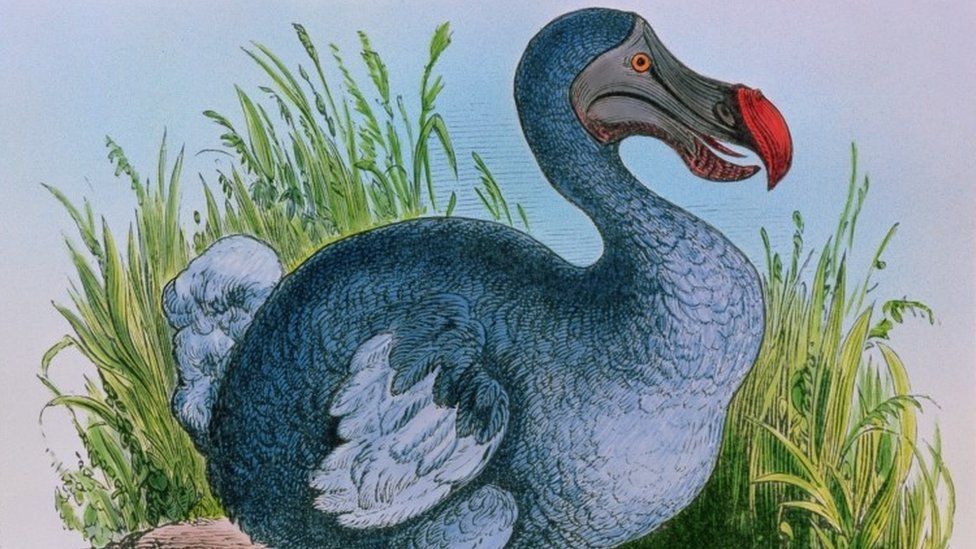Could we bring the dodo back from extinction?
- Published
- comments

Could scientists help bring this feathery bird back to life?
Could we bring the dodo back from extinction? A group of scientists think it could be possible!
The dodo became extinct - meaning there are no more left of them in the world - in the 17th Century, around 100 years after it was first discovered.
In a recent panel discussion by the Royal Society, Professor Beth Shapiro, from the University of California, in the US, shared that her research team had managed to sequence the DNA of a dodo.
This means they have managed to discover and write out the key genetic information that makes up the bird which they hope could be used to try to bring the dodo back to life!
What was the dodo like?
The dodo was a flightless bird that lived on the island of Mauritius, in the Indian ocean.
Fossils of the bird show that some of them reached a metre tall, and they looked a bit like a chicken with a large beak.
It became extinct after being hunted by humans, and invasive species - like cats and dogs - that the humans had brought with them.
The dodo got its name from the Portuguese word for 'fool' after sailors joked about its lack of fear of human hunters.
How can scientists bring animals back from the dead?
As part of her research, Professor Shapiro and her team took a DNA sample from a dodo specimen at the Natural History Museum in Copenhagen, in Denmark.
From looking at it they were able to learn more about its genetic information - a bit like a complicated instruction manual in a Lego building kit, to help the researchers learn how the dodo is put together.
What do the words mean?
DNA: is the chemical name for a long molecule that contains the genetic instructions of all living things.
Gene: a short section of DNA
Chromosome: are bundles of DNA and proteins. Different creatures have different numbers of chromosomes.
Genome: a complete set of all the genetic information in a living thing. It has all of the instructions the living thing needs to function.
"If I have a cell and it's living in a dish in the lab and I edit it so that it has a bit of dodo DNA, how do I then transform that cell into a whole living, breathing, actual animal?" said Professor Shapiro.
"The way we can do this is to clone it, the same approach that was used to create Dolly the Sheep, but we don't know how to do that with birds."
This is because birds have different internal organs and systems that mammals do not.
However Professor Shapiro said that there are groups of researchers looking into how it could be done.
Could the Nicobar pigeon hold the key to the Dodo's return?
For example, some scientists think that the Nicobar pigeon, a close relative of the dodo could have its DNA changed to include some dodo DNA - but this would not be a full dodo.
Scientists are currently also trying to bring back the woolly mammoth, by using similar techniques.
However, other scientists in California recently said that their research suggested that these methods wouldn't work and the money would be better spent on protecting animals that are now endangered.
- Published15 September 2021
- Published9 September 2021
- Published22 March 2022
